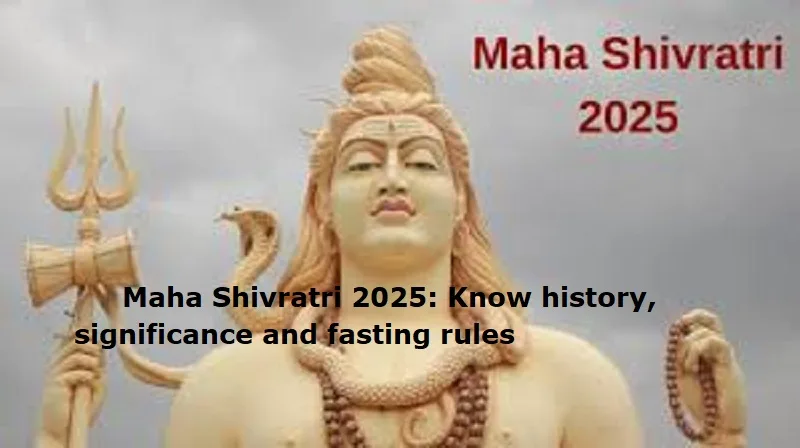
Mumbai: Maha Shivratri also known as ‘the Great Night of Shiva’ is a Hindu festival. It is a special day dedicated to worshipping Lord Shiva. Maha Shivratri occurs once a year, on the 14th day of the dark fortnight of the Hindu month of Phalguna. This year, the festival will fall on Wednesday, February 26, with the Nishita Kaal Puja (midnight worship) taking place from 12:09 am to 12:59 am on February 27.
Maha Shivratri celebrations are associated with several stories about Lord Shiva. Generally, Maha Shivratri is celebrated as the anniversary of Lord Shiva and Goddess Parvati, but there are many other stories in various texts and scriptures describing why Maha Shivratri is celebrated.
According to Puranas, Shivratri is celebrated as the day Shiva saved the world from the pot of poison that emerged during the great mythical churning of the ocean called Samudra Manthan.
According to another story, Shivratri marks the day Brahma and Vishnu got involved in an argument about their supremacy. It is believed that an angry Lord Shiva punished them by taking the form of a massive fire that spread across the length of the universe. Vishnu and Brahma then got into the race to find the end of the fire and prove their prowess. However, Brahma is believed to have resorted to a lie, and angered Shiva greatly who cursed that no one would ever pray to him.
Also Read: SBI predict India’s GDP growth at 6.3% for current fiscal
In the Shivaism tradition, this is the night when Shiva performed the glorious dance of creation.
On this day, devotees observe the special Maha Shivratri vrat (fast). Devotees throng Shiva temples across the country, perform late evening puja and offer milk to the Shivaling. Many spend the night chanting verses and hymns in praise of Lord Shiva.
Shivratri has a great significance for the Kumbh Mela also. The festival marks the end of the mega holy event which is celebrated after every 12 years.
Maha Shivratri symbolises the triumph over darkness and ignorance, encouraging spiritual awakening and self-reflection. The festival serves as a reminder of the impermanence of life and the cyclical nature of existence, encouraging devotees to embrace change, release attachments, and seek inner transformation.
The rituals of Mahashivratri involve decorating the Shiva Linga with flowers and bael leaves. Devotees observe a day-long fast and offer bhaang, fruits, honey, ghee, sweets and milk to Lord Shiva. They take a bath early in the morning before visiting the temple to seek blessings from the deity.
On the evening of Mahashivratri, people gather at the temple and worship the Shiva Linga. Devotees light lamps and spend the entire night at the temple. A light sattvik meal is usually consumed on Mahashivratri to end the fast. The prasad could consist of non-cereal foods, fruits and sweets.
On Maha Shivratri, devotees adhere to strict fasting rules, abstaining from consuming any kind of food, and even water. Some may choose to observe a partial fast by consuming fruits, milk, and nuts, while others opt for a complete fast lasting for the entire day and night.
The fast is traditionally broken on the following day, after sunrise, with the consumption of a simple meal consisting of fruits, milk and other vegetarian delicacies. Devotees offer prayers and seek the blessings of Lord Shiva before partaking of the first meal, which is considered sacred and blessed.

Post Your Comments